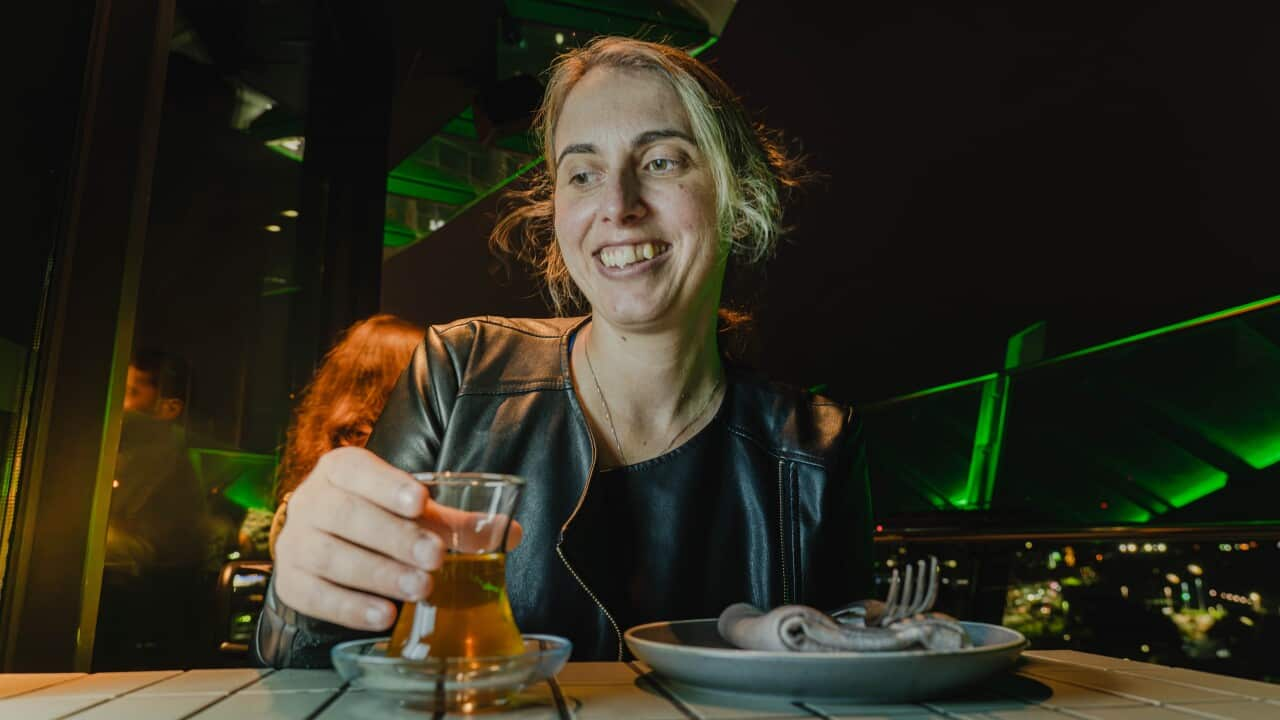Key points Steph is visually impaired and wants to know more about the activities she books for her holiday. She uses her other senses, including smell, hearing and touch, to experience the destinations she visits. With one in five Australians living with a disability, making travel more accessible could have wide-ranging benefits. Steph Agnew is visually impaired, but that doesn’t stop her from taking scenic routes on holiday. Agnew has Cone-Rod Dystrophy (CRD), a degenerative eye disease that she was diagnosed with at age 19. She lost her sight completely before she turned 30.
Though she may experience her destinations differently than she did before, travelling still brings her great joy.
Experience travel without vision
During a recent visit to Cairns as part of a podcast on accessible travel, Agnew took a ride on the Kuranda Scenic Railway and, although it meant he couldn’t enjoy the sights, he still enjoyed the other sensory experiences.

Steph Agnew is visually impaired and relies on her other senses to experience the places she visits. Credit: Courtesy/Reuben Nutt/Queensland Tourism Events
“As you come down the mountain, you feel the change in temperature, you know you’re in a rainforest, you know you’re in a tunnel,” Agnew said. “Then as the train went past the waterfall, you heard the waterfall really loud, so you knew it was there, and you got to experience it fully. It was really amazing.” She said the audio details that are played to every traveler were particularly helpful. “They’d say, ‘Outside the window on the left you can see the ocean in the distance, and below that is a bridge, and this is the background of the bridge,’ so it was kind of describing what was going on outside the window, and that was really clear to me,” Agnew said.
“This piece included me in the piece while telling a story about history that everyone can enjoy. So it’s universal design. Whether intentional or not, this piece included me, who is blind, in the piece.”
Steph’s Travel Diary
Agnew has visited Vietnam, Thailand and Fiji in recent years. “I used to plan my trips around the places I wanted to see, and I think a lot of people plan their trips around sightseeing, but that’s not an option for me anymore,” she said. In Ho Chi Minh City, she experienced the vibrancy of her surroundings and sampled the local cuisine.
In Thailand, she attended cooking classes and listened carefully to what was going on around her, “allowing me to make what everyone else was making and then enjoy the taste afterwards.”

Thailand is one of Steph Agnew’s international destinations. Credit: Getty/VW Pics/Universal Images Group
Agnew visited Fiji when she was 19, when she still had her eyesight, and remembers “the beautiful scenery of the islands and the colors of the ocean.” On a recent trip, she had a totally different experience in Fiji. “We had a fantastic experience on an island we visited, where we had a one-on-one basket weaving lesson,” she said. A Fijian staff member climbed a palm tree, cut off branches in front of Agnew, and helped her weave a basket. “Usually when you teach someone, you say, ‘Watch me do it and then repeat it,’ but obviously that doesn’t work for me,” Agnew said.
“So he sat down with me and guided my hands and explained to me with words how to do it so that I could weave this amazing basket.”
Booking trips and tours as a blind person
Agnew said many services and attractions need to be more considerate to better accommodate people with disabilities, and that starts before she even makes a reservation. When booking a vacation, she wants to know plenty of details about what’s included in her travel experience, especially the non-visual aspects. “The more information, the better,” she said.
“There often isn’t a lot of information on websites so what’s really important for tourism operators is to communicate what they have and what they don’t have in terms of accessibility and give people to contact if they have questions, because travelling with a disability requires a lot more planning.”

Steph Agnew said that given that 20% of people live with some kind of disability, businesses that take into account the different needs of potential customers will be able to attract more customers. Source: Provided
Australia’s tourism demand research found that 23 per cent of Australians have accessibility needs. “There is a real market for accessible tourism. 20 per cent of Australians have a disability, that means there are one billion people with a disability in the world,” Mr Agnew said.
“We have money to spend, just like everyone else. We still want to travel. So if businesses are accessible to disabled people, they’ll benefit a lot.”
Focus on accessible tourism
The Queensland Government has declared 2023 the “Year of Accessible Tourism.” State Tourism Minister Stirling Hinchliffe wants Queensland to be “the destination of choice for people of all abilities” ahead of the Brisbane 2032 Olympic and Paralympic Games. $12 million in funding has been allocated to help the tourism industry better cater for visitors of all abilities.
Tourism Queensland produces a podcast about accessible travel, Accessed That, which Agnew will feature in an upcoming episode.

